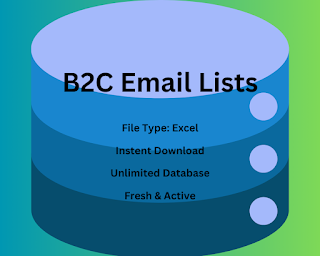Post by mxjhon1 on May 6, 2024 12:20:58 GMT -5
Email threats are no longer what they once were: they have gone from simple annoyances to sophisticated cyber threats seeking personal gain. In response, services like Gmail have had no choice but to evolve as well: a veritable arms race between hackers attempting innovative infiltrations and email providers beefing up their defense systems.
We now encounter AI-powered fortifications where machine learning algorithms patrol millions of lines of code beneath user interfaces to ensure everything stays above ground level (or rather inside our inboxes). . And believe me when I tell you, they're doing a great job: Google b2c email lists boasts that its AI defenses stop more than 99.9% of spam, phishing attempts, and malware before they reach us mere mortals who review our morning emails over coffee.
Good email authentication and hygiene practices

The role of DMARC in email security
Email fraud is a big problem, right? It's like those identity thieves who try to crash your digital party. That's where DMARC comes in, acting as a gatekeeper at the door of your inbox. Domain-based Message Authentication, Reporting & Conformance (DMARC) is not just another technical acronym: it is essential armor to protect yourself from impostors and maintain the legitimacy of emails.
This protocol verifies that an email that claims to come from a certain domain actually comes from it. Imagine sending VIP invitations: MARC ensures that no one sneaks in with fake passes. If you're thinking this sounds similar to SPF (Sender Policy Framework) or DKIM (Domain Keys Identified Mail), you're right. But here's the catch: DMARC uses the results of SPF and DKIM combined with your policy requirements before approving an email.
If you want to sit at the Gmail table after February 2024, strengthening your DMARC is not optional, but mandatory. For companies that have mastered the kung fu of email marketing , implementing strong DMARC policies may be your next step in combating spam.
We now encounter AI-powered fortifications where machine learning algorithms patrol millions of lines of code beneath user interfaces to ensure everything stays above ground level (or rather inside our inboxes). . And believe me when I tell you, they're doing a great job: Google b2c email lists boasts that its AI defenses stop more than 99.9% of spam, phishing attempts, and malware before they reach us mere mortals who review our morning emails over coffee.
Good email authentication and hygiene practices

The role of DMARC in email security
Email fraud is a big problem, right? It's like those identity thieves who try to crash your digital party. That's where DMARC comes in, acting as a gatekeeper at the door of your inbox. Domain-based Message Authentication, Reporting & Conformance (DMARC) is not just another technical acronym: it is essential armor to protect yourself from impostors and maintain the legitimacy of emails.
This protocol verifies that an email that claims to come from a certain domain actually comes from it. Imagine sending VIP invitations: MARC ensures that no one sneaks in with fake passes. If you're thinking this sounds similar to SPF (Sender Policy Framework) or DKIM (Domain Keys Identified Mail), you're right. But here's the catch: DMARC uses the results of SPF and DKIM combined with your policy requirements before approving an email.
If you want to sit at the Gmail table after February 2024, strengthening your DMARC is not optional, but mandatory. For companies that have mastered the kung fu of email marketing , implementing strong DMARC policies may be your next step in combating spam.

